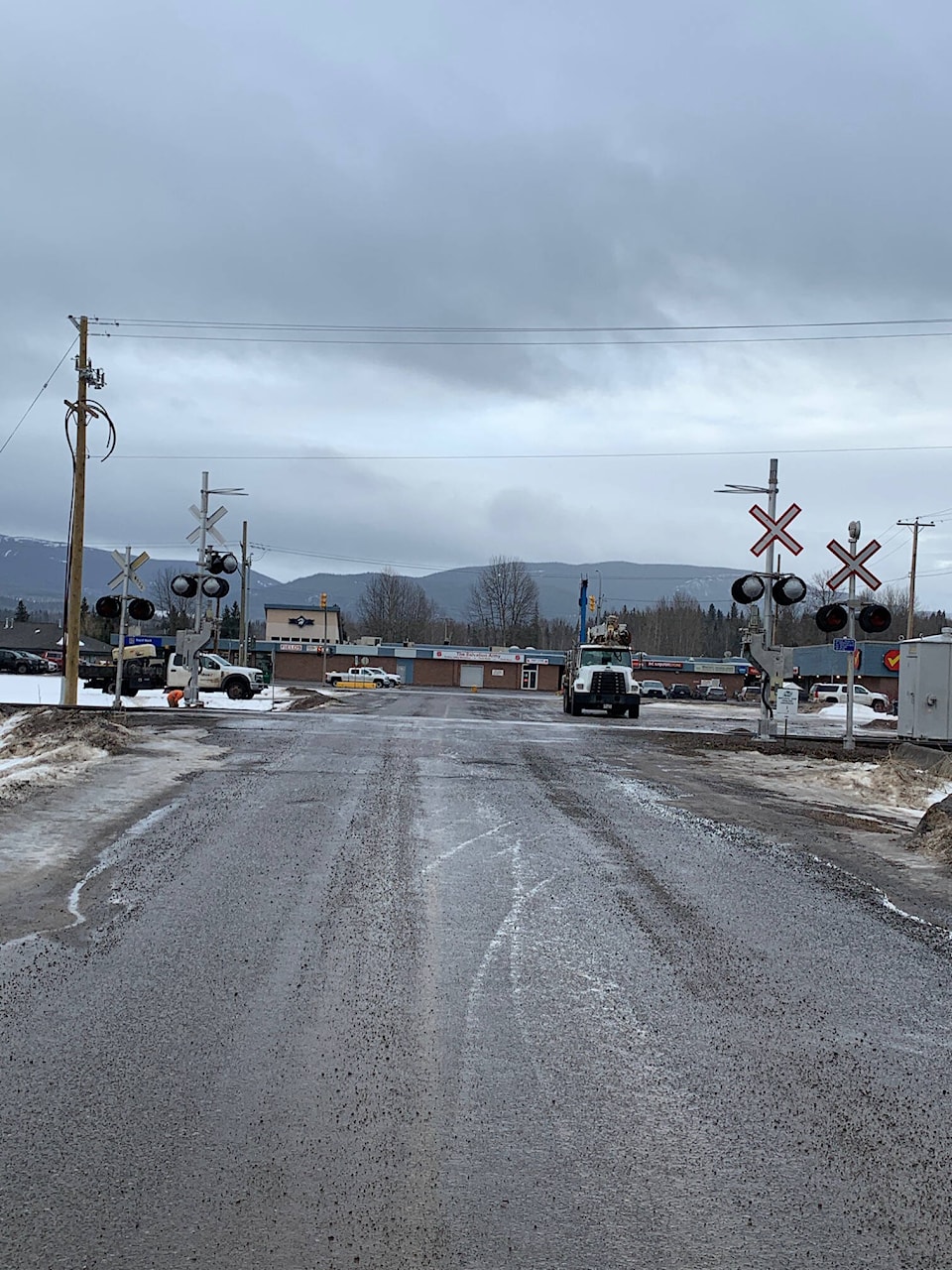Two long standing projects top the list of major expenditures released by the District of Houston Feb. 9 as it outlined plans for this year.
Work has already resumed on long-term improvements along Hwy16 as it runs adjacent to the downtown core.
New street lighting, better sidewalks and placing overhead utility lines underground — all aimed at improving the visuals along this stretch of the highway and its usefulness for pedestrians — has proved more complicated and expensive than first projected.
The District has relied on outside grants and some of the work has been absorbed, for instance, by BC Hydro, but the District has had to dip into its reserves to complete financing.
This year the District is calculating it will take $1.197 million to completely finish the project.
The next most expensive project is a comprehensive safety upgrade featuring gates and lights where the CN tracks intersect Benson Ave.
Announced last year, this project is tagged at $698,015 and is being helped along by a federal grant. CN crews will do the work but a start date has yet to be announced.
Further down the list is a completion of the 9th St. and associated improvements and work here is to cost $327,001.
This project, also financed by a combination of outside grants and the District’s own reserves, is being called Phase 1 of a multi-phase plan intended to transform the downtown core with above ground improvements of better sidewalks and lighting as well as replacing underground civil works.
The above projects come under the public works category of the District’s spending plan for this year and when all proposals are added up, the total comes to $4.126 million.
The District would use $1.560 of its own surplus, $976,000 it received from the federal government from gas taxes collected by the government, $364,000 from a specific federal grant, $573,000 in other grants and $470,000 in reserves accumulated through internal charges for public works equipment to come up with much of the financing.
The planned project spending for this year, should it all be approved by council, would make up the first year of a five-year financial plan the provincial government requires of local governments.
Recreation services expenditures are planned at $766,000 with the largest cost item being $291,000 to replace the heat pump at the leisure facility followed by $135,000 to repair concrete at the arena and $130,000 for safety upgrades of playground equipment.
The District is anticipating $208,000 in outside grants, using $180,000 of a substantial provincial grant already in the bank, and $300,000 in its reserve accounts for the arena and leisure facility to cover the majority of the costs.
There are no major sewer or water projects anticipated for this year.
The financial information presented to council last week also included updates on specific monies received by the District.
One grant of $1.066 million came from the province in Nov. 2020 to help the District recover from any costs associated with the pandemic.
There’s still $687,009 left and council is being asked to indicate how this should be spent.
“As the intention of the funds were to be used in 2020, 2021 and 2022, the District should identify how these funds can best be used to deliver services and address COVID-19 issues in the community,” reads background information presented to council.
Council has so far, for example, assigned $100,000 to help local groups deal with the effects of the pandemic. There’s $21,235 left of that amount.
